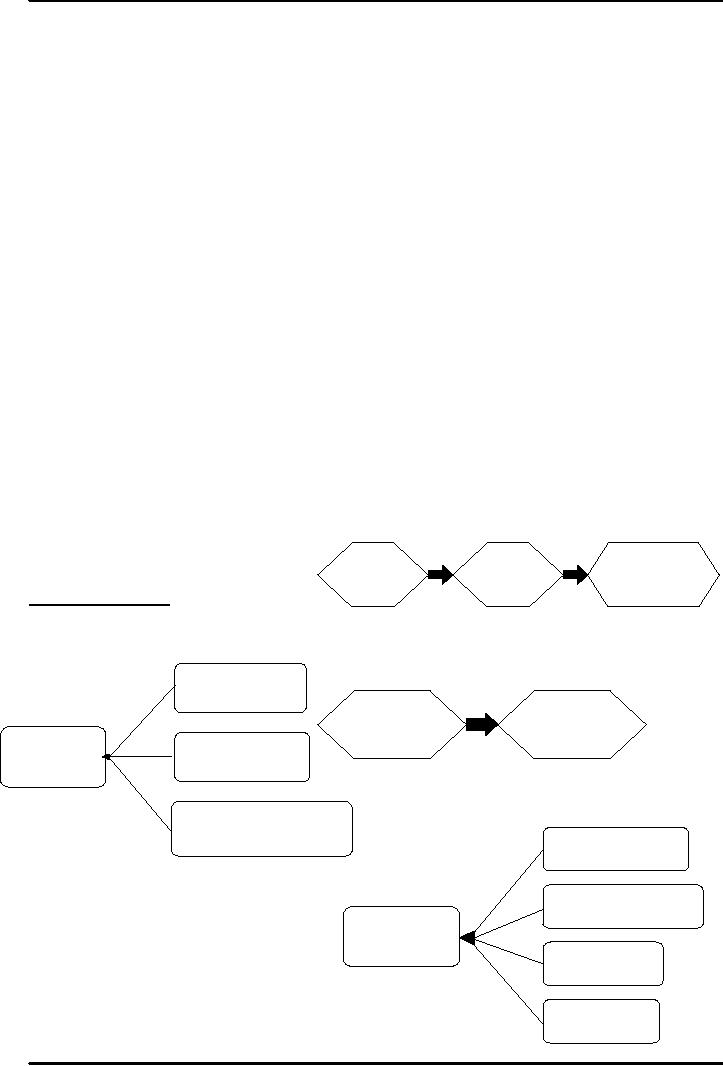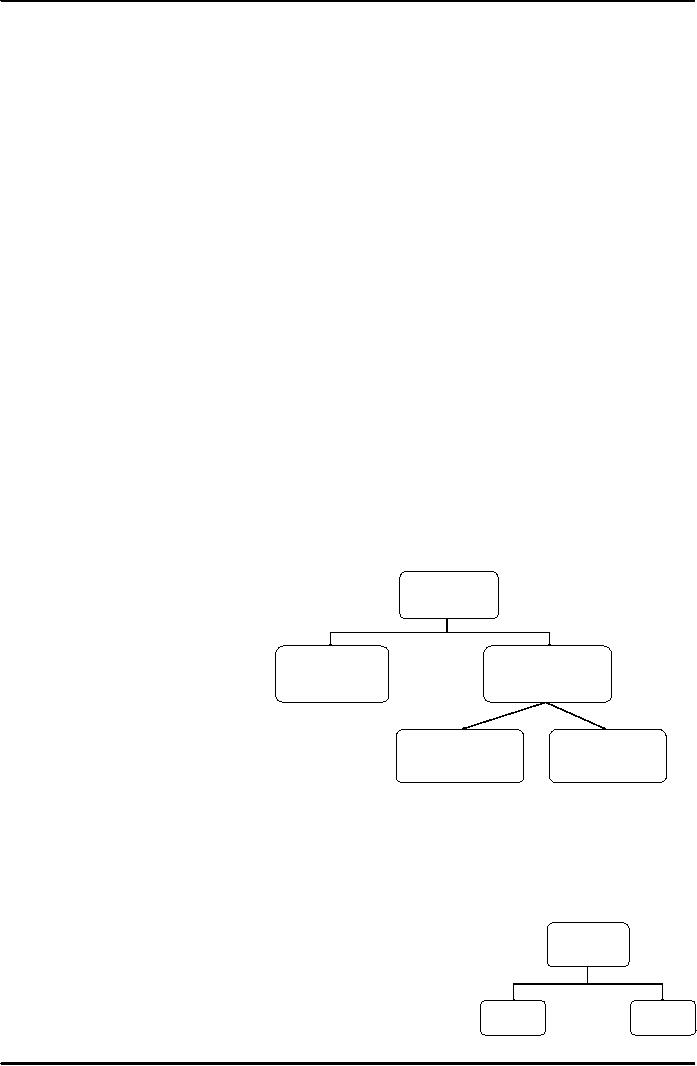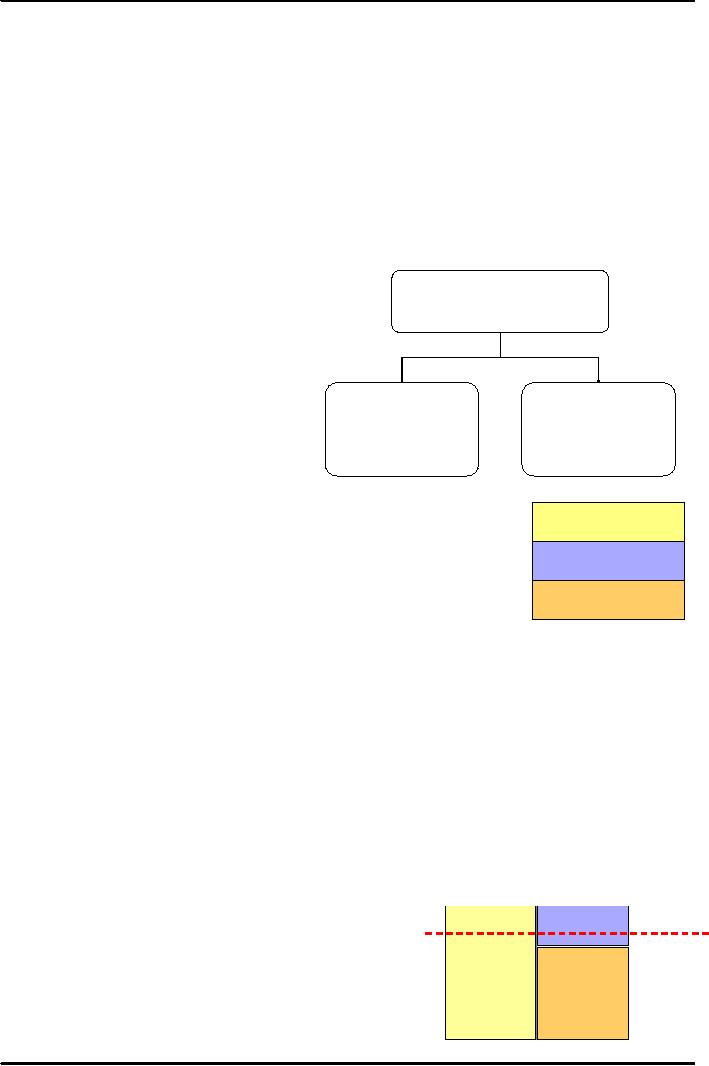 |

Introduction
to Psychology PSY101
VU
Lesson
5
THE
PSYCHODYNAMIC APPROACH/
MODEL
The
approach that concentrated on the
unconscious forces that
drive our behavior; belief
that the inner
forces
over which individuals have
little control motivate
behavior.
·
Founded
by Sigmund Freud, the most influential
figure in the history of
psychology.
·
The
basis of motivation and
behavior lies in inner
forces; forces that are
predetermined, and forces
over
which humans have little
control, which the person is not
aware of i.e.,
unconscious
determinants
of behavior
·
It
maintained that instincts are the
driving force behind individual's
personality; there are life
instincts
as
well as death instincts that
play a role in human
life.
Significance
of Psychodynamic Approach
·
The
most influential theory of the
20th century, that affected
psychology and related
disciplines
in
a revolutionary manner
·
Gave
an entirely new perspective to the
understanding of behavior and
mental processes as
well
as mental illness
·
The
first theory to raise the
awareness that not all
behavior is rational
·
Gave
an impressive, broad based, therapeutic
approach
·
Provided
a basis to understand everyday
life phenomena e.g. interpersonal
relationships,
aggression,
prejudice
·
Many
other, later, approaches built
their paradigms on this approach -
some by refining it,
some
by deviating from it
·
One
of the main ideas is that
there is an inner tension for the
fulfillment of instincts,
the
tension
leads to action for fulfillment, the
fulfillment leads to reduced
tension.
Inner
Tension
Action
Reduced
Tension
Roots
Of Human Action
Inherited
Instincts
Satisfaction
Of
Inhibited/
Needs
And
Halted
Action
Reduced
Drives
Human
Biological
Drives
Action
Attempts
To Resolve
Conflicts
Between Personal
Needs
And Social Demands
Deprivation
States
Sigmund
Freud: 1856-1939
Physiological
Arousals
·
Founder
of psychoanalysis
Energy
For
·
Austrian
physician, neurologist,
Behavior
psychologist
Conflicts
·
Born
in Moravia (Czech Republic) in a
middle
class family
·
Studied
at Vienna University where he
became interested in
Frustration
27

Introduction
to Psychology PSY101
VU
neurological
research
·
Spent
three years at General Hospital
Vienna and worked in nervous
diseases, psychiatry,
and
dermatology
·
1885:
Became professor of neuropathology at
Vienna University
·
1885:
Following a government grant went to Paris as a
student of French neurologist
Jean
Charcot,
who was treating nervous
diseases through hypnotic
suggestion
·
Freud's
interest in psychopathology was
heightened as a result of his
studies of hysteria, under
Charcot
·
1886:
Established private practice in
Vienna specializing in nervous
disease. His interest
shifted
from
physiological to psychological explanation of
psychopathology
·
Started
collaborative work with Josef
Breuer
·
1895:
wrote "Studies
on Hysteria"; main
emphasis was that uncharged
emotional energy
associated
with forgotten psychic
traumas resulted into
hysterical symptoms
·
Therapy,
at that stage, involved
putting the patient in a hypnotic
state, where he recalled
and
reenacted
the traumatic experience =
Catharsis
·
Hence
the formal beginning of
Psychoanalysis
Foundations
of Psychodynamic Approach
Psychic
Determinism
All
behavior is determined i.e., has a
cause that lies in the
mind/psyche
Role
of Consciousness
A
significant part of our behavior is
generated by unconscious
forces
Continuity
of Normal and Abnormal
Behavior
Normal
and abnormal behavior are
different only in terms of
degree and not in
kind
Emphasis
on Clinical Observation
Clinical
observation/ case studies
were the main source of
data
MIND
CONSCIOUS
SUB
CONSCIOUS
Structure
of Consciousness
Conscious
Contains
thoughts and feelings of which
one is
immediately
aware
PRE
CONSCIOUS
UNCONSCIOUS
Subconscious
Mind
level below the level of conscious
awareness
Preconscious
Part
of the sub conscious that
can be accessed by deliberate
choice
Unconscious
Part
of the sub conscious that cannot be
accessed directly although impulses,
ideas, and feelings
may
permeate
out through other sources
e.g. dreams, slips of tongue
etc.
DREAM
CONTENT
Dreams
in Freudian Approach
·
Dreams
reflect unconscious needs, desires,
and impulses.
·
Dreams
have two levels of dream
content: manifest and latent.
MANIFEST
LATENT
CONTENT
CONTENT
28

Introduction
to Psychology PSY101
VU
Manifest
content
The
obvious, apparent part: what
a dream appears to be to the
dreamer.
Latent
content
The
dream's true meaning, which
is usually disguised or distorted by
dream work.
Symbolism
·
The
manifest content is in a symbolic
form
·
The
latent content is converted into this
form by the `dream censor, a
mechanism that
ensures
that
sleep is not disturbed by unconscious
desires, and those desires
are presented in a
socially
acceptable
form. The manifest content
is in the symbolic form of the latent content.
Only the
psychoanalyst
can interpret it.
Motivating
Forces
Sources
of motivation
Psychodynamic
Model of Personality
THANATOS
EROS
Destructive
energy
Is
a three-part structure of the
mind;
Life
affirming force
expressed
in self
expressed
in
containing
id, ego and super
ego.
destructive
activities
creative
activities
as
well as aggression
including
procreation
towards
others
Id
At
birth, the entire mind consists of
only id. It consists of
pure, unadulterated,
SUPER
EGO
instinctual
energy and exists entirely
on the unconscious level. It is the source
of
basic
drives; operates under the `pleasure
principle' i.e., it wants
immediate
EGO
gratification
of needs. The id has two
means of satisfying bodily
needs, reflex
action
and
wish
fulfillment.
ID
Reflex
action is responding
automatically to a source of irritation
.e.g. an infant
may
sneeze in response to an irritant in the
nose or reflexively move a confined
limb, thereby freeing it. In
both
cases, reflex action is effective in
reducing tension. Coughing and blinking
are other examples of
reflex
action.
Wish-
fulfillment is
more complicated. It is the conjuring up
of an image of an object or event that
is
capable
of satisfying a biological need
e.g. a hungry person thinks
of food- related
objects.
Ego
Mediates
the link of the self with the
outside world, "Real World", as
well as between the id and
superego;
operates
under the demands of the environment. It
operates under the reality principle and
operates in the
services
of id. In other words, the
ego comes into existence in
order to bring the person
into contact with
experiences
that will truly satisfy
his/ her needs. When the
person is hungry, the ego
finds food; when the
person
is sexually aroused, the persons
finds an appropriate sex object; and when
the person is thirsty, the
ego
finds liquid. The
ego goes through reality testing to
find appropriate
objects.
Super
Ego
Ego
Conscious
Unconscious
There
is a third component of personality that
makes things
Super
Ego
Id
much
more complicated, i.e. super
ego. It is governed by the
moral
constraints. It develops from the
internalized patterns of
reward
and punishment that the young child
experiences i.e.
Depending
on the values of the parents, certain
things the child
29

Introduction
to Psychology PSY101
VU
does
or says are rewarded and
encouraged and others not
liked
are
punished or discouraged.
Opposes
the id and represents the moral demands
of the family and society;
it
is the ` moral self' or
the
`conscience'
of the person
Development
of Personality: A Stage
Approach
Psychodynamic
approach proposed a stage-
theory of the development of personality:
Oral
Stage
Birth
- 1 ½ Years
Ego
formation begins,
weaning
begins,
delayed gratification is learnt;
body
image develops
Anal
Stage
1
½ - 3 Years
Continuation
of ego development;
toilet
training; formation of
super
ego
Phallic
Stage
3
- 5 Years
Bodily
and genital awareness
Genital
Stage
Puberty
- end of life
Symbolic
gratification of drives;
secondary
process thinking
Oral
stage
occurs
during the first year of
life and the erogenous zone
during this stage is the mouth. At this
stage,
pleasures
mainly come from mouth.
According to Freud, an adult who is
fixated at the early oral
stage will
engage
in abundance of oral activities such as
eating, drinking, or smoking. This
person also will engage
in
activities
that are symbolically equivalent to those
oral activities such as collecting things, being a
good
listener
etc.
Anal
stage
starts
during the second year of
life, and the erogenous zone
is the anus- buttocks region. It is the
stage
when
the child has to gain
control over his physiological
processes so that they function in
accordance with
the
demands of the society.i.e the child
must be toilet trained. Fixation at this
stage may result in
physical
problems.
Phallic
stage
starts
from the third year of life
to about fifth year, and the
erogenous area are the genital
area. This is one
of
the most complicated and controversial of
Freud's stages. It is the stage of
Oedipus and Electra
complexes,
the resolution of which has profound
influence on an adult's life. The
male child
experiences
the
Oedipus complex, which is
named after an ancient play by Sophocles,
entitled Oedipus Tyrannus, in
which
King Oedipus killed his
father and married his
mother. The male child
resents the father, because
he
is
regarded as a rival for the mother's
attention and affection. The
female counter part of the
Oedipus
complex
is Electra complex, named after another play by
Sophocles entitled " Electra", in
which Electra
causes
her brother to kill her
mother who had killed
Electra's father.
Latency
stage
it
lasts from about sixth year
to about twelfth year. Here the
sexual interests are
displaced to substitute
activities
such as learning, athletics, and
peer group
activities.
Genital
stage
it
is the final stage of development that
occurs following puberty. It is the time
at which the person
emerges
from pre genital stages as the
adults as he/ she destined
to become. Now the child has
become a
socialized
adult with heterosexual
interests leading to marriage
and child- rearing. If,
however, the
experiences
during the pregenital stages cause
fixation, they will manifests
themselves throughout
one's
adult
life.
30

Introduction
to Psychology PSY101
VU
Anxiety
·
An
emotional state experienced as a
result of felt threat to the
self
·
Anxiety
arises when ego cannot cope
too much of:
i.
Demands
of the id
ii.
Demands
of the ego
iii.
External
danger
·
In
order to protect itself
against anxiety and threat, ego
uses defense
mechanism
Defense
Mechanisms
Ego
defense system, that may be
distorting reality
i.
Repression:
Blocking
unpleasant/ unacceptable thoughts by
pushing them into the
unconscious
e.g. forgetting events of the
painful childhood.
ii.
Regression:
Reverting
back to a stage that was
satisfying e.g. a boss
showing temper
tantrums
like
a child; or acting like a
baby.
iii.
Displacement:
Redirecting
the expression of unwanted desires or
impulses to a substitute
rather
than the actual target e.g.
beating children when a wife cannot
express anger toward
husband.
iv.
Rationalization:
In
order to justify one's
behavior, one develops a
socially acceptable
explanation
or reasoning e.g. going for a
second marriage saying that
the first wife was
quarrelsome.
v.
Denial:
Refusing
to acknowledge or accept anxiety
provoking thoughts or impulses e.g. being
a
heavy
smoker but saying `I am an
occasional smoker'.
vi.
Projection:
Attributing
unwanted thoughts and impulses to others
e.g. a person takes bribe
and
blames
the organization for paying him not
enough salary.
vii.
Sublimation: Converting
unwanted impulses into
socially approved thoughts,
feelings and
actions
e.g. disliking the in-laws
but behaving in a very
friendly manner, or becoming
a
stamp
collector to overcome the
impulse to steal
Psychotherapy:
Psychoanalysis
·
An
intensive, long-term psychotherapeutic
procedure.
·
Requires
long sessions over extended
periods----- may be years.
·
Better
suited to intelligent
individuals.
·
Involves
a special relationship between the therapist
and the patient.
·
Target:
To explore
unconscious motivation, conflicts,
desires.
·
Goal:
Establishing
intra psychic harmony by developing
awareness of the role of the
id,
reducing
over compliance with super
ego, and by strengthening the
ego.
·
Understanding
of `repression': The
therapy gives central importance to the understanding
of
the
manner in which the person uses
repression for handling
conflict.
Interventions
used in Psychotherapy
1.
Free association
·
Kept
in a comfortable position, the patient is
asked to talk aloud and say
whatever comes to his
mind
without considering whether or not it is
relevant, rational, or sensible.
·
The
patient is asked to reveal
even the most undesirable
and strong thoughts that have
been
repressed.
This leads to emotional
release, called
`catharsis'.
2.
Analysis of Resistance
At
times patient feels
inhibitions, and is unable or
unwilling to express some
thought or feeling i.e.,
barriers
between
conscious and unconscious.
The psychoanalyst aims to
break down such resistances
so that the
patient
is enabled to face the unpleasant
thoughts, impulses, events.
31

Introduction
to Psychology PSY101
VU
3.
Dream Analysis
The
therapist tries to uncover the latent content of
dreams and decipher the
symbolism involved.
4.
Analysis of Transference & Counter
Transference
·
Transference:
The patient's emotional response toward
the therapist is often an indication
of
the
patient's relationship with a person who
had been the center of the
conflict. It may be
negative
or positive.
·
Counter
Transference: The therapists'
emotional reaction toward the patient is
also important.
He
may also start having
positive or negative feelings
for the patient.
·
Transference
is analyzed and understood as part of the
therapeutic process.
Criticism
against Freudian Psychodynamic
Theory
·
There
is no scientific proof that many
psychodynamic constructs, e.g.
unconscious, exist
·
Psychic
Determinism: Freudian approach is deterministic and
leaves not much room
for
conscious,
rational, decision making or personal
will to act
·
It
ignores the external variables and the
environment
·
It
emphasizes the early childhood
experiences too much
·
Mostly
criticized for its interpretation of the
relationship between the
genders
·
The
therapy is too time consuming and
therefore expensive
The
Psychoanalytic Approach after
Freud
The
Neo Freudian
·
The
theorists who belonged to the Freudian
school and supported it, but
later digressed on
some
issues and differed from
Freud
·
They
emphasized, more than Freud, the
following:
i.
Current
social environment play an
important role in one's
life.
ii.
Life
experiences have a continuing influence
and childhood alone should
not be of
prime
importance.
iii.
Positive
interpersonal relations of love and
social motivation have a significant
role.
iv.
Ego
functioning is significant rather than
id.
v.
Development
of self-concept is important.
vi.
Self-esteem
is important.
1.
Alfred Adler
(1870-1937)
His
theory is known as "individual
psychology" which in many ways is the
opposite of Freud's theory.
For
Freud,
individuals are constantly in conflict
with one another and with
society; Adler saw them
seeking
relationships
and harmony, he looked upon
mind as an integrated whole working to
help to attain the future
goals.
·
Initially
he was Freud's closest
friend.
·
1911:
Diverted and launched his
version of psychoanalytic
approach.
·
Differed
from Freud in:
i.
Freud's
negativity (e.g. Thanatos
instincts)
ii.
Freud's
idea that libido is the prime
impulse
Adler's
Approach
Main
concepts: Esteem,
inferiority complex, birth
order, will to power and
style of life
i.
We
are a product of the social
influences on our personality
ii.
Goals
and incentives drive us more
than drives and
instincts
iii.
Our
goal in life is to achieve
success and superiority
Inferiority
complex: the feeling of
being less able than others.
It affects one's relationship with
others and
his
achievement in many
ways.
32

Introduction
to Psychology PSY101
VU
Motivating
Forces of Human
Life
i.
Feeling
of inferiority
ii.
People
are primarily motivated to
overcome inherent feelings of
inferiority
Birth
Order: has
effect on personality. The first- born is
different from the last one,
and so is the
middle-
born different from
others.
Sibling
Rivalry: Siblings
feel a kind of rivalry toward
each other.
Psychopathology:
Compensation:
i.e., Compensatory defense
mechanism combined with
conscious
or
unconscious feelings of inferiority is
the main cause of psychopathological
behavior.
Function
of the Psychoanalyst: To
discover and rationalize such
feelings and break down
the
compensatory,
neurotic will for
power.
2.
Carl Gustav Jung
(1875-1961)
A
Swiss psychiatrist, founder of the
analytical school of psychology, Jung
presented a complex theory of
personality.
·
1913:
left the inner circle of
Freud's students and
colleagues, although he had
chosen Jung as
his
successor.
·
Was
mystical in his understanding and
description of personality.
·
Had
a positive approach toward
one's ability to control
one's destiny.
·
His
view of human nature is
among the most complex ever portrayed.
The human psyche is
embedded
in past, present, and
future; it consists of conscious
and unconscious
elements,
rational
and irrational impulses,
masculine and feminine
tendencies, and a tendency to
bring all
these
contradictory tendencies into harmony
with each other. Self-
actualization is achieved
when
such harmony exists, but
self- actualization must be sought; it
does not occur
automatically.
·
Believed
that the spiritual side must
be satisfied, which usually
happens in middle age
when
many
of the components of psyche have
been discovered.
·
Religion
to him is the major vehicle in the
journey towards self-
actualization.
Jung's
disagreements with
Freud
·
The
understanding and description of the
genders.
·
The
nature of unconscious.
The
main Jungian concepts
Major
goal of life: Unification
of all aspect of our
personality:
·
Conscious
And Unconscious
·
Introversion
(Inner Directed), Extroverted (Outer
Directed)
Libido
·
Energy
for personal growth and
development
Types
of Unconscious
·
Personal
unconscious: Similar
to Freudian view
·
Collective
unconscious: ideas
beyond personal experience, inherited
from ancestors' all
generations,
and common to all of
humanity.
Archetypes
·
Part
of collected unconscious, universal forms
and patterns of thought: These
include themes
that
can be seen in myths e.g.
masculinity, femininity, good, evil
opposites, motherhood.
3.
Karen Horney
(1885-1952)
·
German-
American psychologist.
·
Trained
as a psychoanalyst in Germany who later
shifted to the US.
33

Introduction
to Psychology PSY101
VU
·
She
agreed with Freud on the levels of
unconscious, anxiety, and
repression.
·
She
emphasized childhood experiences,
social interaction and
personal growth.
Disagreement
with Freud
·
Differed
from Freud on primary impulses; impulses
are not the main motivating
force.
·
Disagreed
on Freudian position regarding the
biological basis of differences
between genders.
Main
Concepts in Horney's Theory:
Basic
Anxiety
·
A
Major Concept: If The
Environment Is Hostile And
The Child Feels Lonely
And Isolated,
Then
This Anxiety Develops. It Can Be Overcome
By Proper
Parental Nurturing
Basic
Hostility
·
Children
develop such hostility if parents
are over strict, punishing,
indifferent, or inconsistent.
·
Children
feel very aggressive and hostile but
cannot express it. Repressed
hostility leads to anxiety.
Social
Interaction and Interpersonal
Styles
She
talked about the ways in which people
interact with each other,
and these were thought to
have an
impact
upon the personality of an n
individual:
·
Moving
away from others: seeking
self sufficiency and
independence
·
Moving
toward others: being
compliant and
dependant
·
Moving
against others: trying
to gain control, power, and
independence
Neuroses
Arise
from emotional conflicts that
arise from childhood
experiences, and disturbances in
interpersonal
relationships
in later life
Relationship
with the real self and
the ideal self
Horney
maintained that the real self
includes those things that
are true about us at any particular time.
The
ideal
self reflects what we would
like to become. For normal
people, the ideal self is the goal
that they
would
like to reach in the future; it is
something around which they can
organize their lives and to
which
they
can aspire. For the neurotic
person, according to her, the
relationship between the real and the
ideal
self
is a problem. In the first place, the neurotic's
impression of the real self is distorted.
For him, the ideal
self
is a wish instead of reality and
idealized self is an unrealistic,
immutable dream
Goal
of the therapy
For
her, the goal is to create a
realistic relationship between the real
self and the ideal self.
Horney was
optimistic
about human nature and the ability to
change. Human interactions caused
problem and human
interactions
solved problems also.
34
Table of Contents:
- WHAT IS PSYCHOLOGY?:Theoretical perspectives of psychology
- HISTORICAL ROOTS OF MODERN PSYCHOLOGY:HIPPOCRATES, PLATO
- SCHOOLS OF THOUGHT:Biological Approach, Psychodynamic Approach
- PERSPECTIVE/MODEL/APPROACH:Narcosis, Chemotherapy
- THE PSYCHODYNAMIC APPROACH/ MODEL:Psychic Determinism, Preconscious
- BEHAVIORAL APPROACH:Behaviorist Analysis, Basic Terminology, Basic Terminology
- THE HUMANISTIC APPROACH AND THE COGNITIVE APPROACH:Rogers’ Approach
- RESEARCH METHODS IN PSYCHOLOGY (I):Scientific Nature of Psychology
- RESEARCH METHODS IN PSYCHOLOGY (II):Experimental Research
- PHYSICAL DEVELOPMENT AND NATURE NURTURE ISSUE:Nature versus Nurture
- COGNITIVE DEVELOPMENT:Socio- Cultural Factor, The Individual and the Group
- NERVOUS SYSTEM (1):Biological Bases of Behavior, Terminal Buttons
- NERVOUS SYSTEM (2):Membranes of the Brain, Association Areas, Spinal Cord
- ENDOCRINE SYSTEM:Pineal Gland, Pituitary Gland, Dwarfism
- SENSATION:The Human Eye, Cornea, Sclera, Pupil, Iris, Lens
- HEARING (AUDITION) AND BALANCE:The Outer Ear, Auditory Canal
- PERCEPTION I:Max Wertheimer, Figure and Ground, Law of Closure
- PERCEPTION II:Depth Perception, Relative Height, Linear Perspective
- ALTERED STATES OF CONSCIOUSNESS:Electroencephalogram, Hypnosis
- LEARNING:Motor Learning, Problem Solving, Basic Terminology, Conditioning
- OPERANT CONDITIONING:Negative Rein forcer, Punishment, No reinforcement
- COGNITIVE APPROACH:Approach to Learning, Observational Learning
- MEMORY I:Functions of Memory, Encoding and Recoding, Retrieval
- MEMORY II:Long-Term Memory, Declarative Memory, Procedural Memory
- MEMORY III:Memory Disorders/Dysfunctions, Amnesia, Dementia
- SECONDARY/ LEARNT/ PSYCHOLOGICAL MOTIVES:Curiosity, Need for affiliation
- EMOTIONS I:Defining Emotions, Behavioral component, Cognitive component
- EMOTIONS II:Respiratory Changes, Pupillometrics, Glandular Responses
- COGNITION AND THINKING:Cognitive Psychology, Mental Images, Concepts
- THINKING, REASONING, PROBLEM- SOLVING AND CREATIVITY:Mental shortcuts
- PERSONALITY I:Definition of Personality, Theories of Personality
- PERSONALITY II:Surface traits, Source Traits, For learning theorists, Albert Bandura
- PERSONALITY III:Assessment of Personality, Interview, Behavioral Assessment
- INTELLIGENCE:The History of Measurement of Intelligence, Later Revisions
- PSYCHOPATHOLOGY:Plato, Aristotle, Asclepiades, In The Middle Ages
- ABNORMAL BEHAVIOR I:Medical Perspective, Psychodynamic Perspective
- ABNORMAL BEHAVIOR II:Hypochondriasis, Conversion Disorders, Causes include
- PSYCHOTHERAPY I:Psychotherapeutic Orientations, Clinical Psychologists
- PSYCHOTHERAPY II:Behavior Modification, Shaping, Humanistic Therapies
- POPULAR AREAS OF PSYCHOLOGY:ABC MODEL, Factors affecting attitude change
- HEALTH PSYCHOLOGY:Understanding Health, Observational Learning
- INDUSTRIAL/ORGANIZATIONAL PSYCHOLOGY:‘Hard’ Criteria and ‘Soft’ Criteria
- CONSUMER PSYCHOLOGY:Focus of Interest, Consumer Psychologist
- SPORT PSYCHOLOGY:Some Research Findings, Arousal level
- FORENSIC PSYCHOLOGY:Origin and History of Forensic Psychology